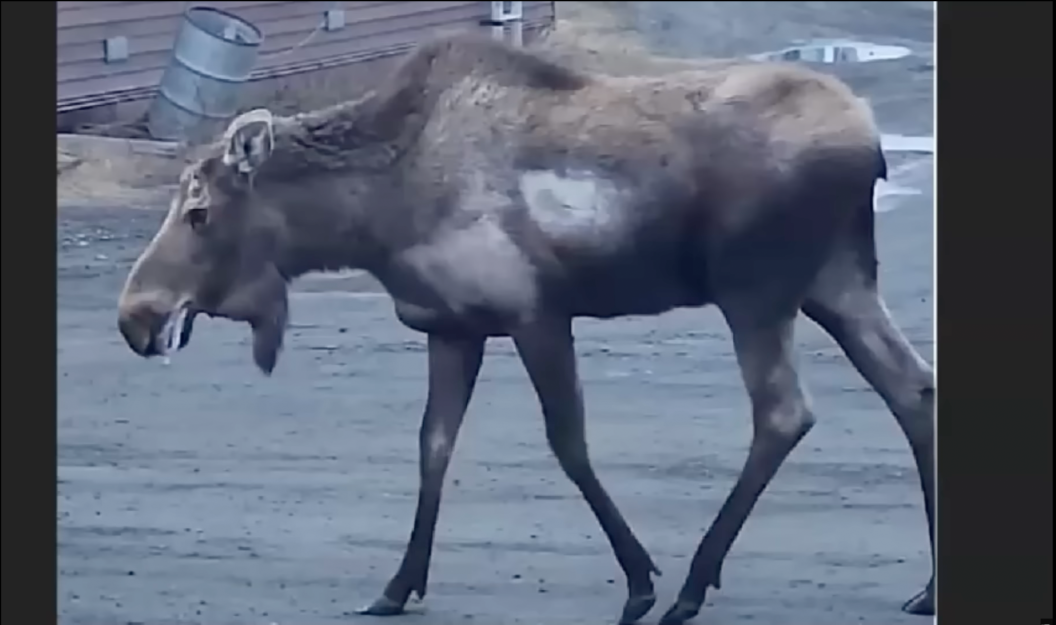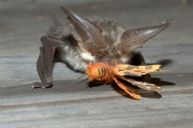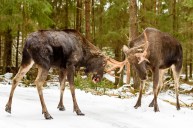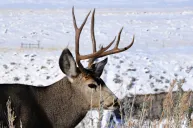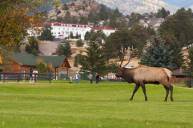Urban moose interactions are pretty common for Alaskan residents—it's not unusual to wake up to a moose relaxing on the front lawn or to see a cow and calves meandering down Main Street. A few months ago, a moose even wandered into an Anchorage hospital, which wasn't even the first time one of the animals had walked into the city's medical facilities. As long as moose are given space and treated with respect, most of these interactions turn out positively.
On June 2, however, the small town of Teller in western Alaska, experienced a potentially-nightmarish situation when a rabid moose stumbled into the community.
What Happened
The moose entered the town in the early morning and began acting aggressively, charging at people and coming too close for comfort. The animal was "unbalanced, stumbling, drooling profusely, and had bare patches of skin," Doug Vincent-Land, the commissioner of Alaska's Department of Fish and Game (ADF&G) wrote in a statement.
It was suspected that the animal had rabies, a viral disease that causes progressive and fatal inflammation of the brain and spinal cord and is characterized by drooling, aggression, and a lack of fear.
It can be passed onto humans and other animals through direct contact with infected saliva, such as through a bite. Because the disease makes the animals more aggressive, they are also more likely to attack humans, such as when a rabid bobcat launched itself at a woman.
After consultation with their wildlife veterinarian, ADF&G euthanized the Teller moose that afternoon under the suspicion of rabies. While very sad, they were able to collect samples of brain tissue and send them to the Alaska State Virology Laboratory, where testing confirmed the rabies virus had been detected in the moose's brain.
While rabid moose have been found in South Dakota and Minnesota, this is the first recorded case of a rabid moose in Alaska.
Further tests showed that the virus was a variant of Arctic fox rabies, which has been circulating in a rabies outbreak among red foxes on the Seward Peninsula, where Teller is located. It's also found in arctic foxes on the North Slope.
Rabies is enzootic in these species, meaning it is always present at low levels, though these numbers occasionally rise into widespread outbreaks. During these outbreaks, the disease can spill over into other animals; the Teller moose likely contracted rabies from an infected fox during last winter's outbreak.
Because moose are generally solitary creatures, ADF&G does not believe that western Alaska moose are at risk of a widespread rabies outbreak. However, ADF&G will increase their surveillance in regions with enzootic fox rabies, including Western Alaska, by testing all brain samples from mammals found dead or euthanized in the region. Members of the Alaskan public in the area are also encouraged to call ADF&G if they find a dead animal or witness an animal with any signs of rabies.
What This Means for Moose Hunting
Western Alaska residents, including Alaska Natives, often rely on the subsistence hunting of moose to provide food for their communities and to connect with their traditional values and customs.
Thankfully, the potential for rabies in moose is not expected to affect hunters in the area. The ADF&G states that moose that display normal behavior and no sign of illness are still considered safe to eat.
For extra precautions, hunters can use gloves while butchering, and carefully disinfect all equipment and surfaces that come into contact with the animal. Meat should also be cooked to an internal temperature of 165 degrees Fahrenheit.
Because pets are much more likely to come in contact with a rabid moose or fox than humans are, the best way to avoid contracting rabies and spreading it through a community is to ensure dogs and cats are kept up to date with their vaccinations.
READ MORE: Remember the "Zombie Moose" That Baffled Alaskan Authorities?
